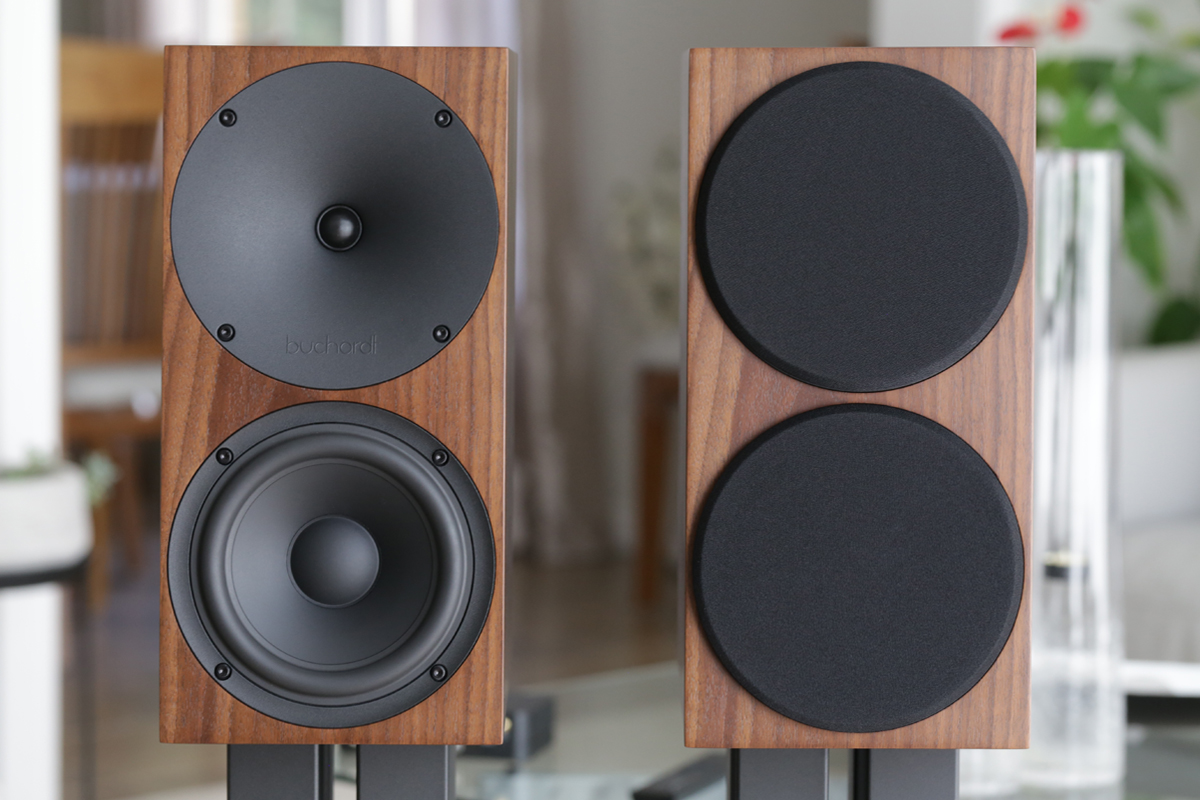 With apologies to William Shakespeare, there’s something rockin’ in the state of Denmark, audiowise. When it comes to active speakers that include digital signal processing (DSP) -- in my opinion, now the most exciting segment of audio -- the Danes are on the leading edge. During my two-years-plus at SoundStage! Simplifi, I’ve written about active speakers from several Danish brands, including DALI, Dynaudio, and System Audio, and I’ve loved them all.
With apologies to William Shakespeare, there’s something rockin’ in the state of Denmark, audiowise. When it comes to active speakers that include digital signal processing (DSP) -- in my opinion, now the most exciting segment of audio -- the Danes are on the leading edge. During my two-years-plus at SoundStage! Simplifi, I’ve written about active speakers from several Danish brands, including DALI, Dynaudio, and System Audio, and I’ve loved them all.
Now you can add another name to that list -- Buchardt Audio -- and in terms of innovation, you can put it right at the top. Buchardt’s A500 active speakers make heavy use of DSP, which allows them to adapt to a wide variety of listening situations (more on that later). The A500 is one of the most versatile speakers I’ve ever reviewed.
The A500 is a sealed design with front- and rear-mounted 6” woofers and a 0.74” soft-dome tweeter, each driver powered by its own class-D amplifier specified to output 150W RMS. Each A500 has a line-level balanced (XLR) input on the back, for connection to a preamplifier, plus a built-in Wireless Speaker & Audio (WiSA) receiver that can wirelessly accept digital audio signals of resolutions up to 24-bit/96kHz from a WiSA transmitter, such as Buchardt’s Stereo Hub.
Rather than use a network of dealers and distributors, Buchardt sells direct to end-users, and offers a 45-day trial period. Shipping, import duties, and insurance are included in the purchase price. In Europe, the price also includes Value-Added Tax (VAT). In the US and Canada, the price includes all local, state, provincial, and federal sales taxes.
The A500s are available in matte finishes of black, white, or walnut veneer, either on their own or in a bundle with the Stereo Hub. In black or white, the price for the speakers only is $4150 (all prices USD, unless otherwise noted) or €3500/pair; in black or white with Stereo Hub, it’s $4450/€3750/pair. In walnut, the A500 alone costs $4250/€3650/pair; with Stereo Hub, $4550/€3900.
The A500
My review samples had the very attractive walnut finish, which had fairly pronounced grain. Fit and finish were excellent, though not luxurious. For example, the screws fastening the drivers to the enclosures are not hidden. However, Buchardt supplies two identical round cloth grilles, which attach magnetically over tweeter and midrange-woofer. The A500s may look out of place in elegant décors; in more casual spaces, they’ll look pretty darn funky.
The cabinet is made of MDF, with separate subenclosures for the two 6” drivers; this improves cabinet rigidity, CEO Mads Buchardt told me in an e-mail exchange. Each A500 weighs 19.8 pounds and measures 14.4”H x 7”W x 11”D. The last dimension requires explanation: Because the speaker’s front and rear panels are slightly raked, at an angle of 5°, its total depth, from frontmost bottom edge to rearmost top edge, is actually about 12”.
The A500 is based on Buchardt’s S400 two-way passive loudspeaker, whose sloped front baffle is used to align the drivers in space so that their wavefronts arrive at the listener’s ears at precisely the same time. In the A500, this time alignment is implemented in DSP -- its front and rear panels are sloped for “mainly cosmetic” reasons, Mads Buchardt confirmed.
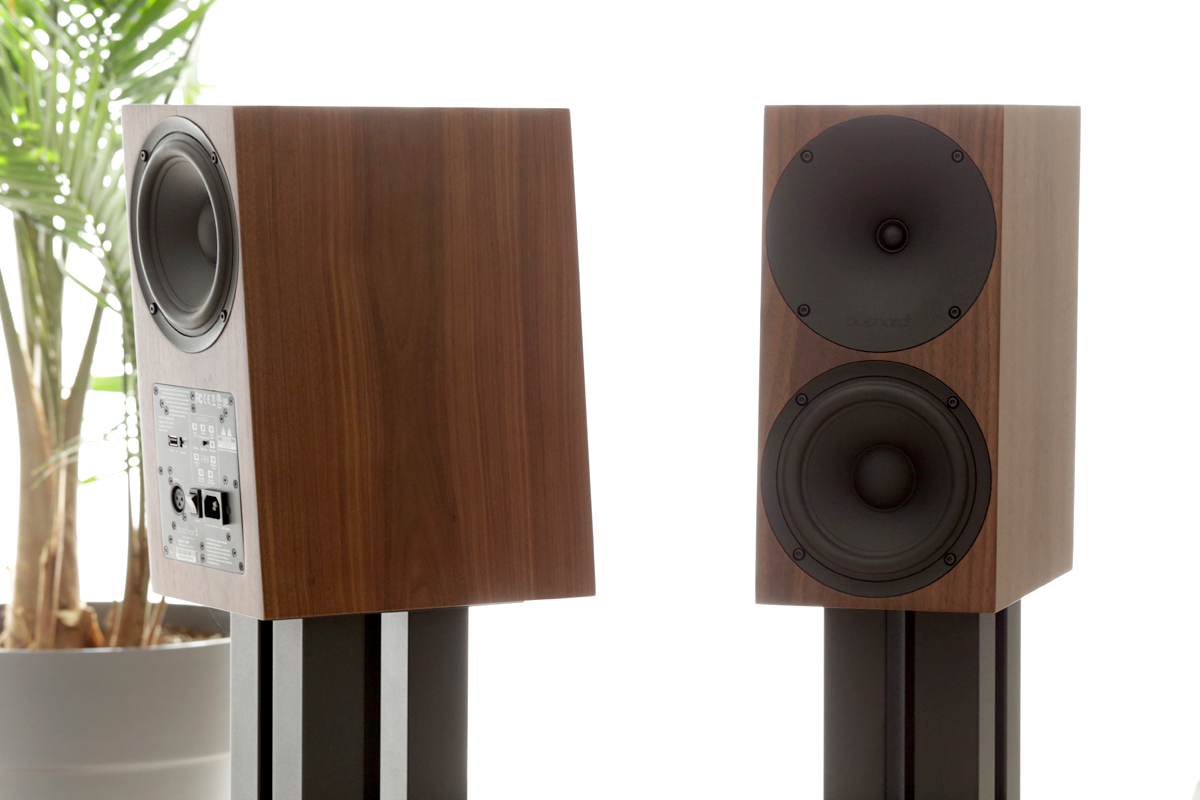
The drivers come from Denmark’s SB Acoustics, whose development lab occupies the same building as Buchardt Audio’s warehouse. The lower half of the front baffle is all but filled by the 6” paper-coned midrange-woofer; above it is the 0.74” fabric-dome tweeter, positioned at the center of a deep, 6”-diameter, aluminum waveguide with a pebbled dark-gray finish and, between 7 and 5 o’clock at bottom, an embossed Buchardt logo. According to the A500’s product page, this waveguide matches the directivity of the tweeter to that of the midrange-woofer, to make “the transition from woofer band to tweeter band practically inaudible at any angle in front of the speaker.” This was apparent throughout my listening -- I found the A500 a very coherent speaker, seamless throughout the audioband.
The 6” woofer filling the upper half of the rear panel is identical to the midrange-woofer on the lower front. Below it is the speaker’s connection panel, with the XLR jack on the bottom, and next to it the on/off switch and three-pronged IEC power connector. Above these is a USB Type-A port for plugging in a thumb drive (I cover its purpose in detail below), a sensitivity switch with three positions (+6, 0, and -6dB) for use with the balanced input, and a group of LEDs and Pairing button for use with the Stereo Hub or other WiSA transmitter.
The most obvious benefit of the sealed two-woofer design is greater cone area, which makes possible deeper bass extension and greater bass output while keeping the cabinet size small. Equally important is the use of DSP, which monitors the woofers’ behavior and adjusts their output in real time, to maximize bass extension and output while minimizing distortion.
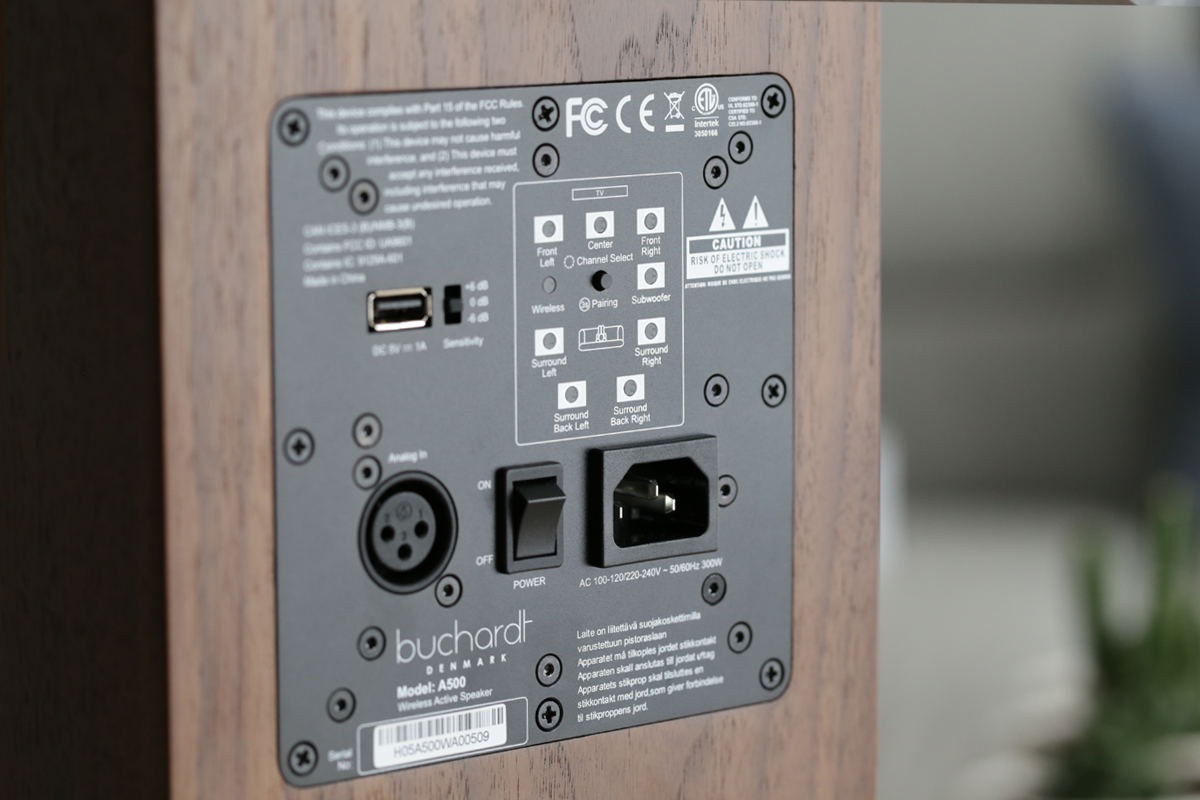
The A500’s specified frequency response is 25Hz-40kHz, ±1.5dB. If, like me, you question whether a compact stand-mounted speaker can produce usable amounts of bass down to 25Hz, consider the following. I connected the A500s’ balanced inputs to my NAD C 658 streaming DAC-preamp, which has Dirac Live room correction, and performed a calibration. I didn’t use Dirac or the NAD for my listening tests, but I was curious about how low the A500s might go in my listening room, and this exercise allowed me to satisfy my curiosity. Dirac showed that the A500s’ uncorrected in-room response was +5dB at 25Hz (the peak was likely the result of a room mode), below which it fell off a cliff. Clearly, as was also borne out by my listening tests, these speakers can go very deep. The A500s produced killer bass -- far beyond what I expected of a pair of stand-mounted speakers.
There’s another benefit of the A500’s unusual acoustic design. A DSP algorithm time-aligns the outputs of the front and rear woofers, and uses the soundwaves reflected off the wall behind the speakers to expand the soundstage. This, too, was borne out by my listening. The soundstage extended far beyond the outer side panels of the two speakers, a benefit especially noticeable with video content. While the A500s didn’t deliver experiences as immersive as you’d get with a full surround system, they produced surprisingly big sound from movie soundtracks.
As they did with the S400 passive speaker on which the A500 is based, the Buchardt designers made 2700 measurements around each driver -- 5400 in total -- to map their behavior in great detail. They then used these data to minimize system resonances using DSP, and to design the filters used in the A500’s crossovers.
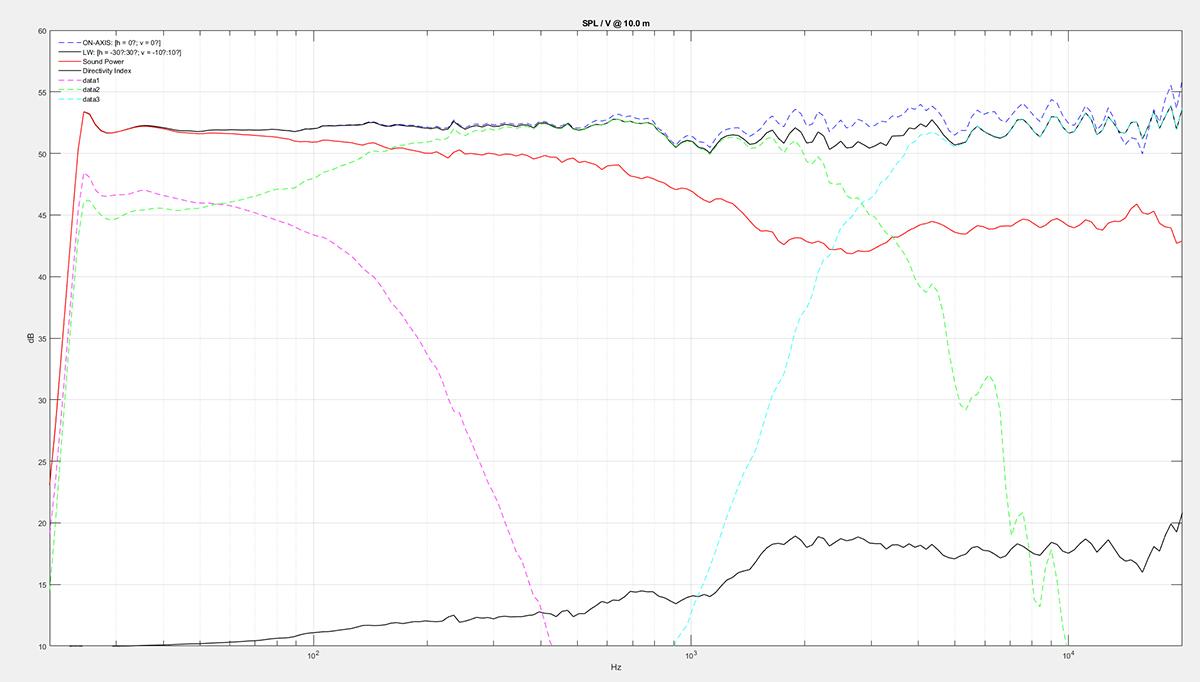
Note that plural: crossovers. The A500 has a unique feature that Buchardt calls Mastertunings. With Buchardt’s “stock” or default Mastertuning, the A500 is configured for 2.5-way operation. The front woofer is crossed over to the tweeter at 2.8kHz with a 24dB/octave filter, and operates all the way down to its lower limit. The rear woofer is low-pass filtered at 150Hz, and so reproduces frequencies from only 150Hz down. You can see the on-axis response, power response, listening window, and crossover operation of the stock Mastertuning in the graph above, taken from Buchardt’s website.
The A500 can also be configured as a three-way system, in which case high- and low-pass filters are applied to the front midrange-woofer. The DSP can be tuned for nearfield or farfield listening, and for placement close to a wall or farther out into the room. There’s a Mastertuning curve with boosted midrange, for a more forward sound for voices. A forthcoming Mastertuning, intended for when the A500s are used with a separate subwoofer, will configure the speakers to radiate bass in a cardioid pattern -- i.e., the rear woofer’s output will be used to cancel out the front woofer’s rearward output. Buchardt Audio explains the designs and applications for its Mastertunings in brief notes on the webpage that links to the downloadable Mastertuning files.
Here’s how the feature works. After downloading the Mastertunings, copy the one you want to a FAT32-formatted thumb drive. Turn the speaker off, insert the drive in the speaker’s USB port, and turn the speaker on. The LEDs on the rear panel will illuminate in a quick clockwise pattern, confirming that the new Mastertuning has been loaded into the speaker’s DSP.
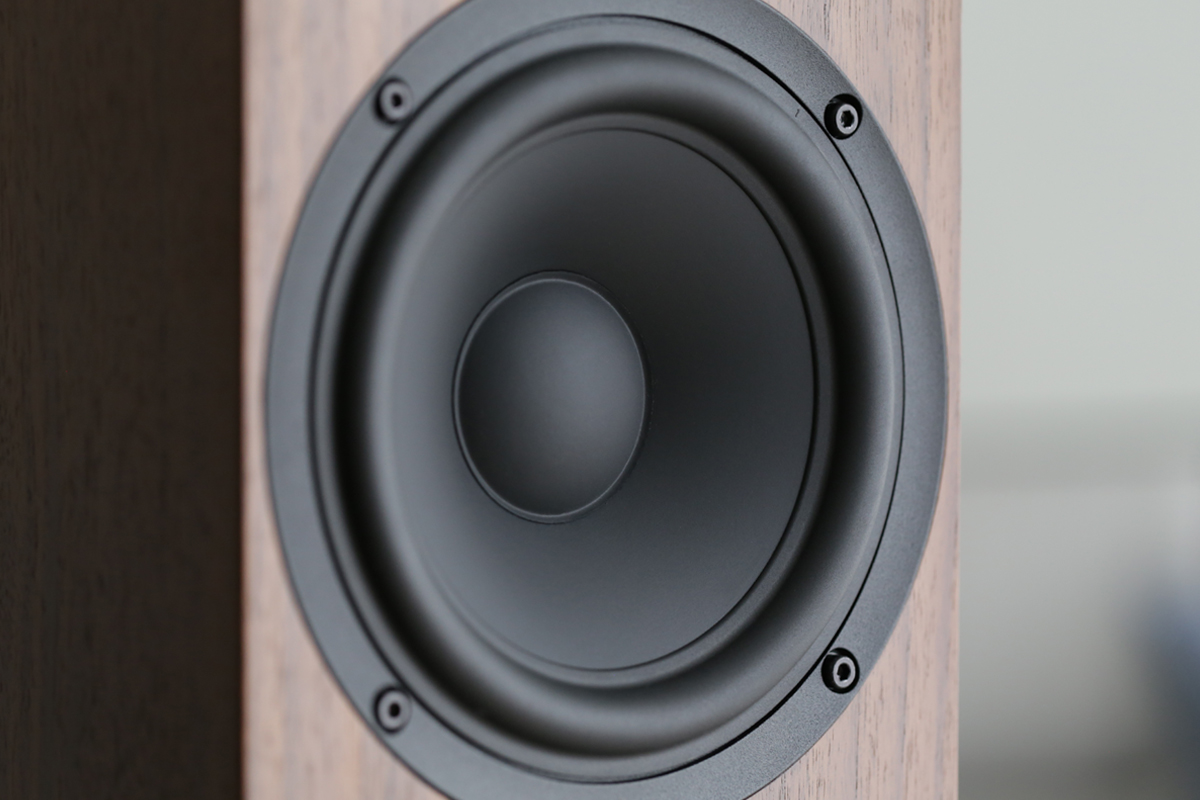
There are other DSP functions. The A500 performs Automatic ISO 226:2003 compensation -- i.e., dynamic equalization -- so that the perceived bass response remains satisfactory at low listening levels (under 70dB).
Following DSP, audio signals flow to a pair of Cirrus Logic CS4398 DAC chips powered by their own regulated supply, and from there to three Texas Instruments class-D amplifier modules, one per driver, each with a power output of 150W RMS/300W peak. In my listening, this translated to hugely impressive dynamics: The A500s could go from pianissimo to fortissimo in a heartbeat. Microdynamics were likewise excellent -- the A500s were capable of conveying fine nuances of musical expression.
The Stereo Hub
Buchardt Audio also supplied its Stereo Hub, manufactured in Nanjing, China, by Hansong Technology, a huge OEM that builds products for many audio companies. Mads Buchardt told me that Hansong has a development lab in Denmark, and that its CEO is Danish.
Buchardt’s Stereo Hub is identical to System Audio’s Stereo Hub, also made by Hansong, and which SA offers with its Legend 5 Silverback WiSA-capable active speakers ($2899/pair), reviewed on this site on August 1. The only difference is that Buchardt’s Stereo Hub includes an aluminum remote control; SA supplies a plastic remote.
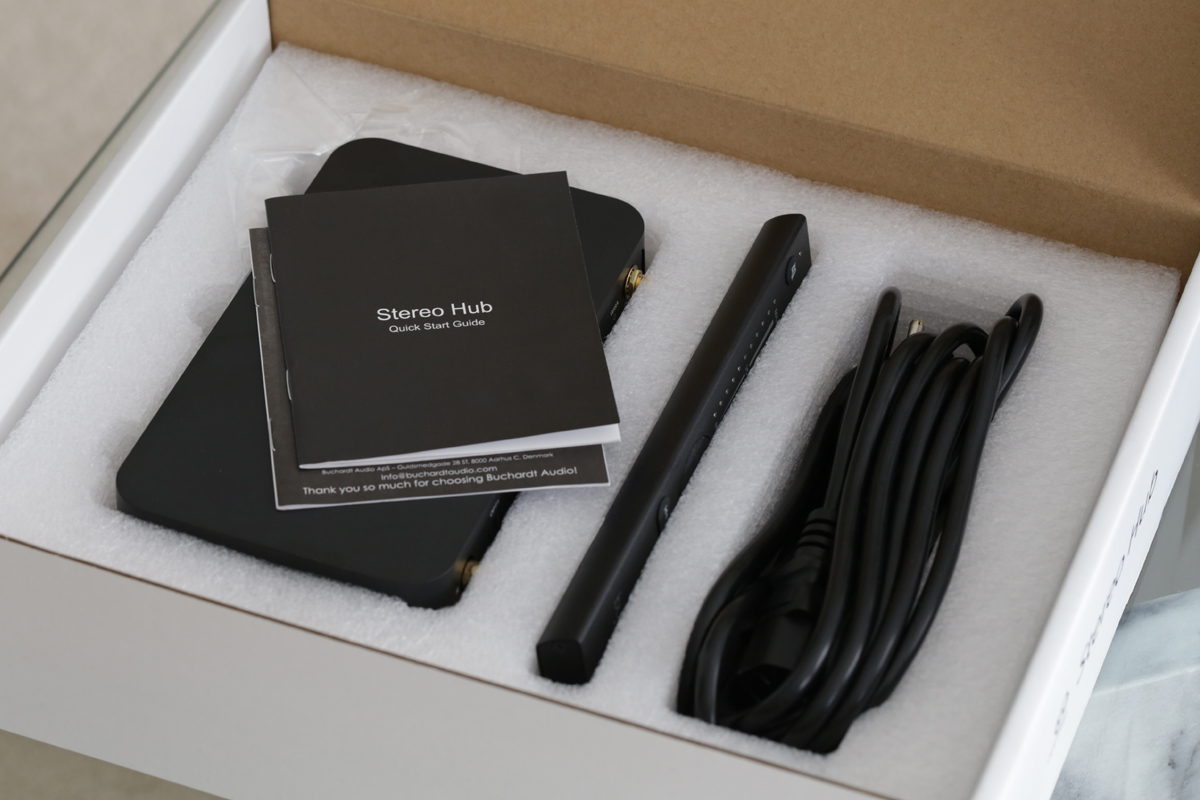
Like SA’s version, Buchardt’s Stereo Hub is a plain-Jane plastic box measuring 6.7”W x 1.7”H x 3.9”D. On the back are one coaxial (S/PDIF) and three optical (TosLink) inputs, a combined analog/optical digital input (3.5mm), two analog inputs (RCA), an HDMI-ARC input for connection to an HDTV, and a USB Type-B port for connection to a PC or Mac. The maximum resolution via coaxial, optical, and USB is 24/192.
The Stereo Hub also has built-in Bluetooth and Wi-Fi. Connectivity options include Chromecast Built-in (maximum resolution 24/96), Apple AirPlay (maximum streaming resolution 16/44.1), and Spotify Connect. Roon users can stream to the Stereo Hub over Wi-Fi via Chromecast and AirPlay.
When I began this review, in mid-September, I was pleased to see that Roon recognized the Buchardt Stereo Hub as an Uncertified Roon Ready player. It’s good I started when I did -- Roon will now not support Uncertified components added after September 21, 2020. I’d still be able to stream from Roon to the Stereo Hub via Chromecast (which doesn’t support gapless playback) or AirPlay (which resamples everything to 16/44.1). In an e-mail exchange, Mads Buchardt told me that the Stereo Hub is currently undergoing the Roon Ready certification process at Roon Labs; he expects it to be certified “in the near future.”
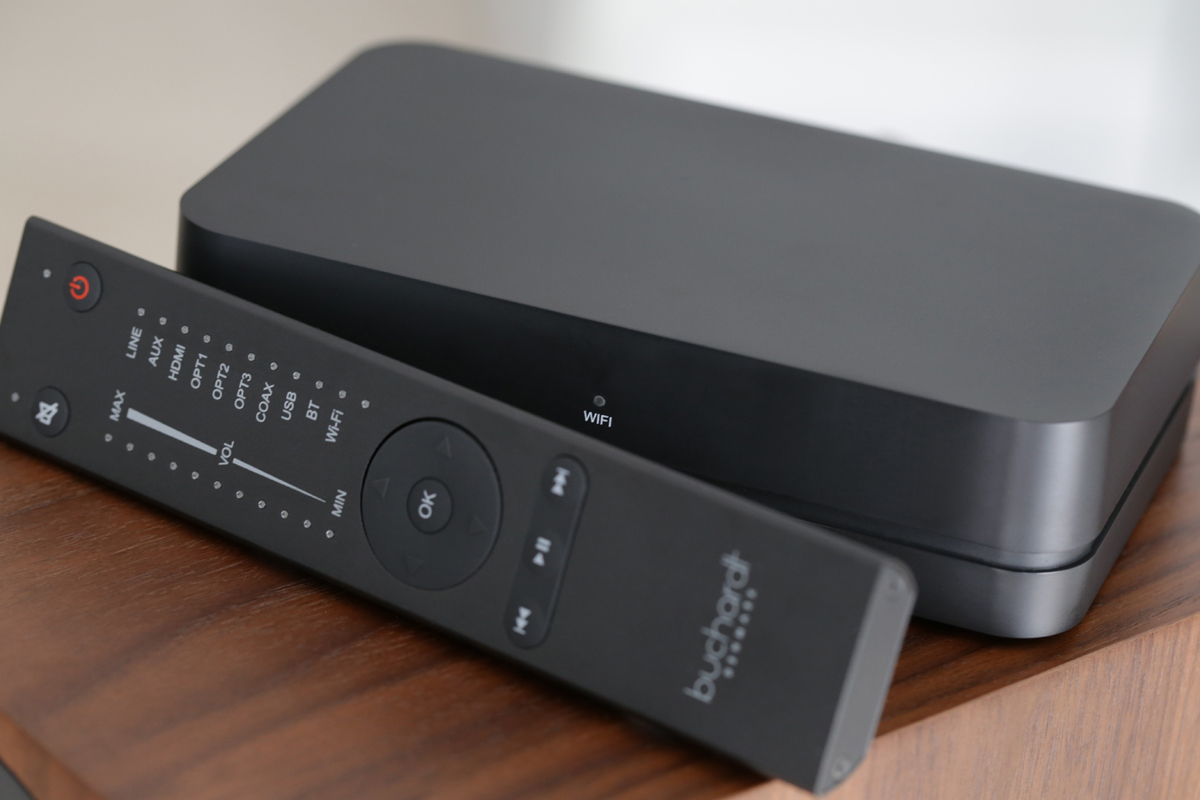
The Stereo Hub’s remote control has buttons for source selection, volume up/down, mute, on/off, play/pause, and previous/next track. It uses RF instead of IR to communicate with the Stereo Hub, which means the Hub can be hidden away in a cabinet -- no line of sight required. The play/pause and previous/next functions work with Bluetooth streaming devices and computers connected to the Hub’s USB input. With Roon, I was able to use the remote to adjust volume and pause playback -- but not to resume play or skip tracks.
You can use the A500s with any WiSA-capable source -- not just the Stereo Hub. Mads Buchardt told me that his company is developing a higher-end WiSA preamp that it will sell under the Buchardt Audio brand. The new component will have a built-in streamer and additional connectivity options, along with an improved power supply and volume control. It will of course be more expensive.
Setup and software
If you’re using the A500s with the Stereo Hub, the first task is to pair the Hub with the remote and speakers. It’s easy-peasy: Press the Pairing button on the back of the Stereo Hub for four seconds, then press any key on the remote. Now remote and Hub can talk to each other. Next, tap the Pairing button on the back of each speaker to move the LED to the desired channel (front left or front right, for two-channel operation), then hold the Pairing button down to put the speaker in pairing mode. When pairing mode is activated on both speakers, press the Pairing button on the Stereo Hub for not longer than two seconds. A red WiSA LED on the back of the Stereo Hub will light up to confirm that pairing has been successful.
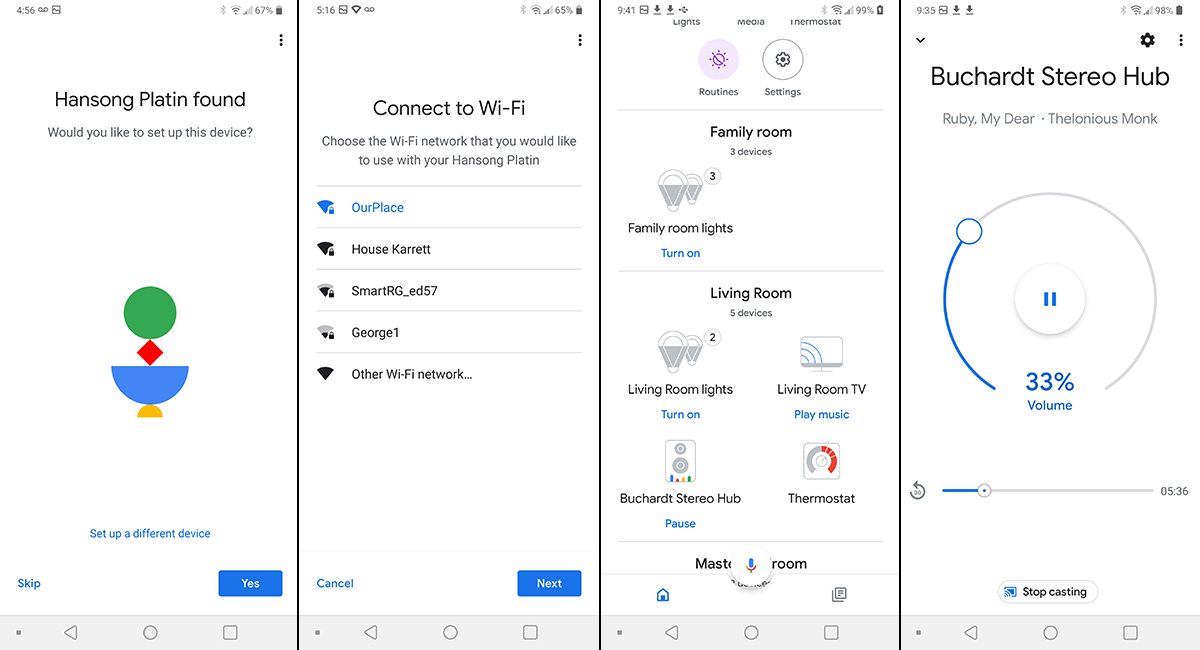
To connect the Stereo Hub to your Wi-Fi network, use the Google Home app, available for iOS and Android. The first time you use this app, you must create a Google home. That done, click the + icon to add a device. When I did this, Google Home saw the Stereo Hub, which it identified as a Hansong Platin, and asked if I wanted to add it to my Google home. Then it asked me to choose my Wi-Fi network from a drop-down list, enter my password, and specify the room in which I was using the device. All went smoothly.
Like the SA Hub, Buchardt’s Stereo Hub has a companion room-correction app that runs on the 6S and later iPhones. I ran into major snags getting SA’s Room Service to work, and experienced similar frustration with Buchardt’s identical version.
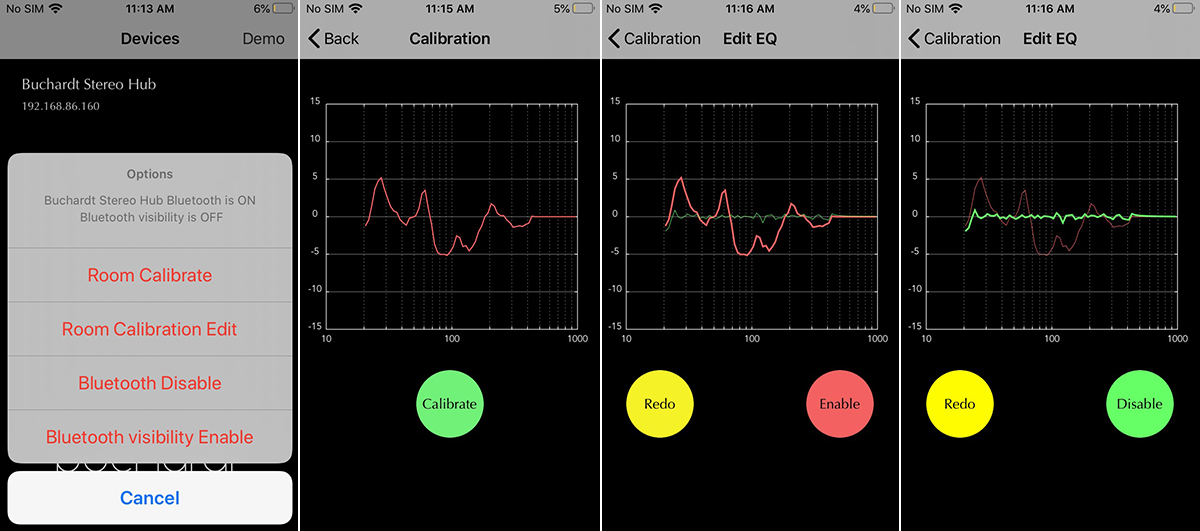
You start by pairing your iPhone and Stereo Hub via Bluetooth -- a vital step not mentioned in the brief instructions that accompany the app. Then select the Stereo Hub as the device you want to calibrate, and choose the Room Calibrate option. As the app plays pink noise through the speakers, walk around your listening room, keeping your phone’s microphone pointed at the speakers. The app will identify room modes and room boundary effects, then create a correction curve.
This process seemed to work smoothly. But as happened with the SA version, when I played music via Roon, Chromecast, or AirPlay, I could hear no difference whatsoever when I switched between the Enable and Disable options for room correction. This is a dramatic contrast with the Dirac Live room-correction software built into my NAD C 658, and with the parametric EQ curves I’ve entered in Roon -- both of which make a significant difference.
I e-mailed an account of this experience to Mads Buchardt and to Ole Witthøft, CEO of System Audio. Witthøft supplied a link to a YouTube stream with a 75Hz sinewave test tone, which he thought would confirm that room correction was actually working. Sure enough, when I streamed that test tone to the Stereo Hub via Bluetooth, I heard a clear difference in level when I Disabled, then Enabled room correction. But when I streamed the same tone to the Stereo Hub via Chromecast and Wi-Fi, there was no difference. “Impossible,” Witthøft and Buchardt both replied. If room correction works on Bluetooth, it should work on Wi-Fi.
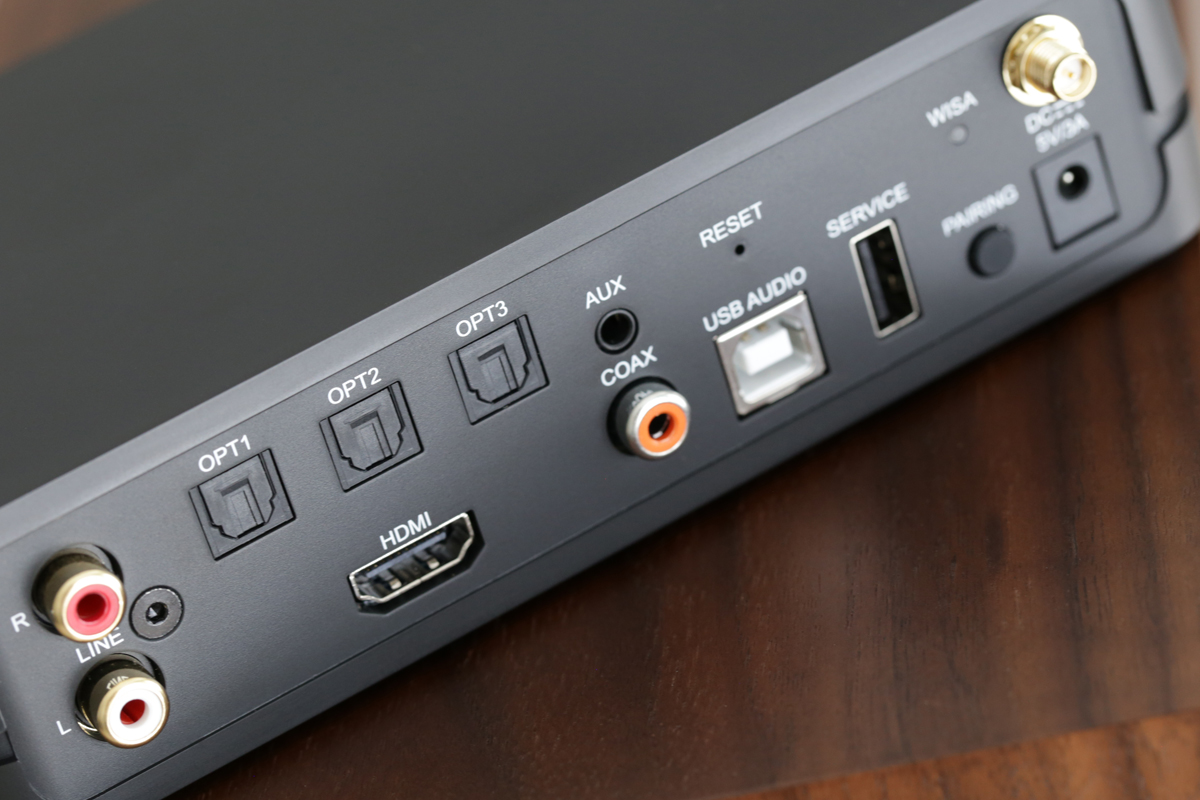
In subsequent exchanges, Buchardt asked me to confirm the firmware version of the Stereo Hub and the version of the room correction app. I did -- both were current. He then came up with one last suggestion: Select the Wi-Fi input on the Stereo Hub, force-quit the app on the iPhone, relaunch the app, choose the Room Calibration Edit option, stream something via Wi-Fi, and listen for any difference when switching between Enable and Disable. Eureka -- there was an unmistakable difference in the level of the 75Hz test tone, just as there had been earlier with Bluetooth. But when I streamed the test tone via Bluetooth, again there was no difference. Apparently, every time you switch inputs on the Stereo Hub, you have to force-quit and relaunch the room correction app for that feature to work.
That figured out, I tried room correction with music, making sure to force-quit and relaunch the app before conducting comparisons. If there was a difference between Enable and Disable, it was minuscule -- nothing like the differences I hear with Dirac and Roon’s parametric EQ.
Buchardt and Witthøft both say that my experience is atypical; many listeners and reviewers, they insist, are using Buchardt’s and SA’s room correction app with no problems at all. Fair enough -- maybe something about my network screwed things up. Maybe more trouble-shooting would have fixed it. But I spent many hours trying to get the app to work as advertised, to no or little avail. Mads Buchardt says there’s “a huge team” behind the room correction app, and insists that, despite its homemade appearance and flaky operation, “it’s not a gimmick.” I’m not convinced.
In the end, I listened to the A500s without room correction -- at least, I think I did. But no matter -- I loved what I heard.
Listening
For my listening tests, I placed the A500s on 28”-high Monoprice Monolith speaker stands, to either side of the faux fireplace in the living room of our Edwardian townhouse. In those positions they were 7’ apart, their front baffles 7’ from the sweet spot on the end cushion of our sectional sofa, their rear panels 16” from the wall behind them.
I used Chromecast to stream to the Stereo Hub from the Qobuz app on my LG G7 ThinQ smartphone, and AirPlay to stream from my iPhone SE; both worked seamlessly. For most of my listening, I streamed music via Wi-Fi from the Mac Mini in my second-floor office, which runs Roon Core 1.7, under control of the Roon app on my LG G7, iPad Mini 3, and MacBook Pro. I used the A500s as configured out of the box, with the stock 2.5-way Mastertuning, reasoning that that’s how most listeners will start.
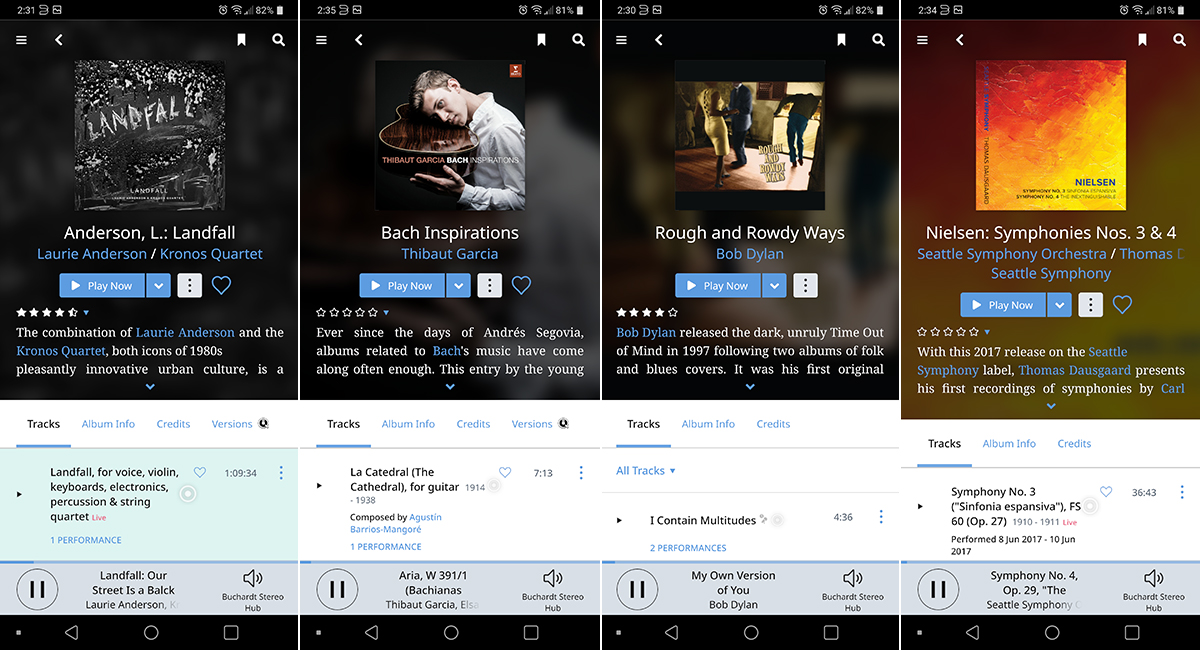
A couple of tracks from Landfall, by Laurie Anderson and the Kronos Quartet (24/44.1 FLAC, Nonesuch/Qobuz), showed off the A500s’ prodigious bass. Recipient of a Grammy Award in 2019, Landfall presents Anderson’s experience of Hurricane Sandy in 2012. Toward the end of “Wind Whistles Through the Dark City,” subterranean electronic effects evoke rolling thunder. Through the A500s they sounded deep and foreboding, almost terrifying -- I could feel as well as hear these notes.
“Wind Whistles . . .” also has a lot going on higher in the audioband. Skittering violin notes portray wind whistling around buildings, while electronic effects emerge from all over the soundstage, and a mournful solo-cello theme evokes the deserted streets. Through the A500s, the close-miked violins had just the right amount of steely edge to sound eerie but not strident. The cello was rich and woody but not overblown, creating a sense of pathos. The soundstage was huge, extending far to the sides and out into the room. Those electronic effects and skittering violins appeared effortlessly from seemingly random points, each well defined, creating a feeling of being alone in a deserted city as weird things happen on all sides.
“Our Street Is a Black River” is gentler. The A500s delivered with impressive ease and power the deep synth notes underpinning the entire track. The four strings of Kronos, arrayed across the front of the soundstage, were just as convincing, the timbres of each instrument close to ideal. As Anderson speaks with quiet compassion, describing the storm’s approach, her voice sounded entirely natural, firmly locked in place at the center of the soundstage, just behind the plane described by the speakers’ frontmost edges, her electric piano just to the right.
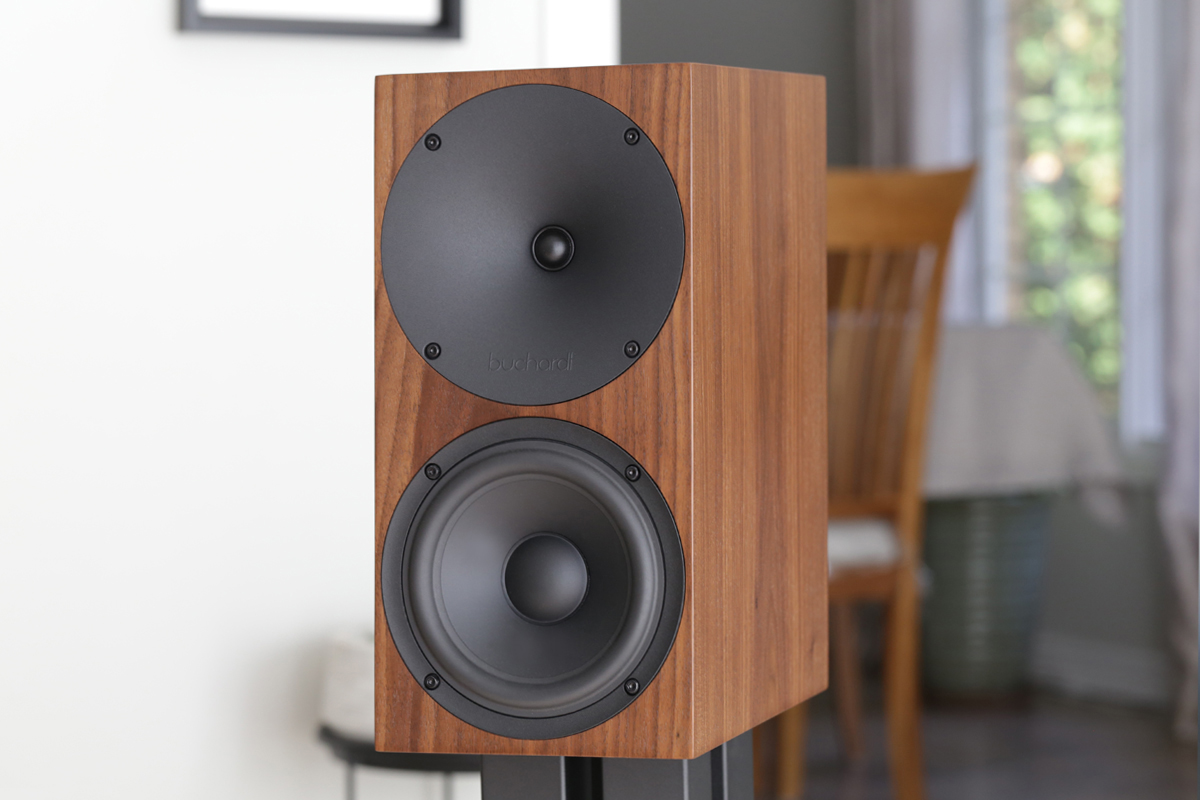
A performance of the famous aria from Heitor Villa-Lobos’s Bachianas Brasileiras No.5, sung by soprano Elsa Dreisig accompanied by guitarist Thibaut Garcia, from Garcia’s album Bach Inspirations (24/96 FLAC, Erato/Qobuz), demonstrated the A500s’ ability to completely “disappear” as apparent sources of the sound. In the opening segment, Dreisig’s clear, ringing voice, here singing wordlessly, hovered just above the plane described by the speakers’ top panels and a foot inside the right speaker, while Garcia’s guitar was on that plane, a foot inside the left speaker. The sounds of both were completely divorced from the speakers themselves -- as if their boxes of MDF and drivers and electronics weren’t in the room at all. The acoustic space surrounding the two musicians was rich and warm, convincingly evoking La Salle Collone, the small concert hall in Paris where this recording was made. The transients of Garcia’s strummed and plucked nylon strings were fast but gentle, and decayed beautifully into the rich, woody tone of the instrument’s body -- testaments to the A500s’ coherence. Later in this performance, the A500s wonderfully tracked Dreisig’s passionate delivery of the Portuguese lyrics, highlighting every expressive gesture.
The A500s were just as effective with male voices and more rollicking material -- as they proved when I played “My Own Version of You,” from Bob Dylan’s Rough and Rowdy Ways (24/96 FLAC, Columbia/Qobuz). They nailed the nasal, gravelly character of Dylan’s snarling baritone -- he was right there in front of me, at the center of the soundstage. Off to the right were Matt Chamberlain’s brushed snare drum and Tony Garnier’s electric bass pounding out the triple-time beat, the bass sounding big and bold but not bloated. On the left, I could appreciate that a strummed acoustic guitar had nylon strings. Wrapped around the whole soundstage was Donnie Herron’s steel guitar, creating a spooky atmosphere perfect for this Frankensteinian ditty. I admired the A500s’ dynamics with this track -- when Dylan spit out a particularly angry phrase or Chamberlain brushed a particularly aggressive beat, the Buchardts tracked it perfectly.
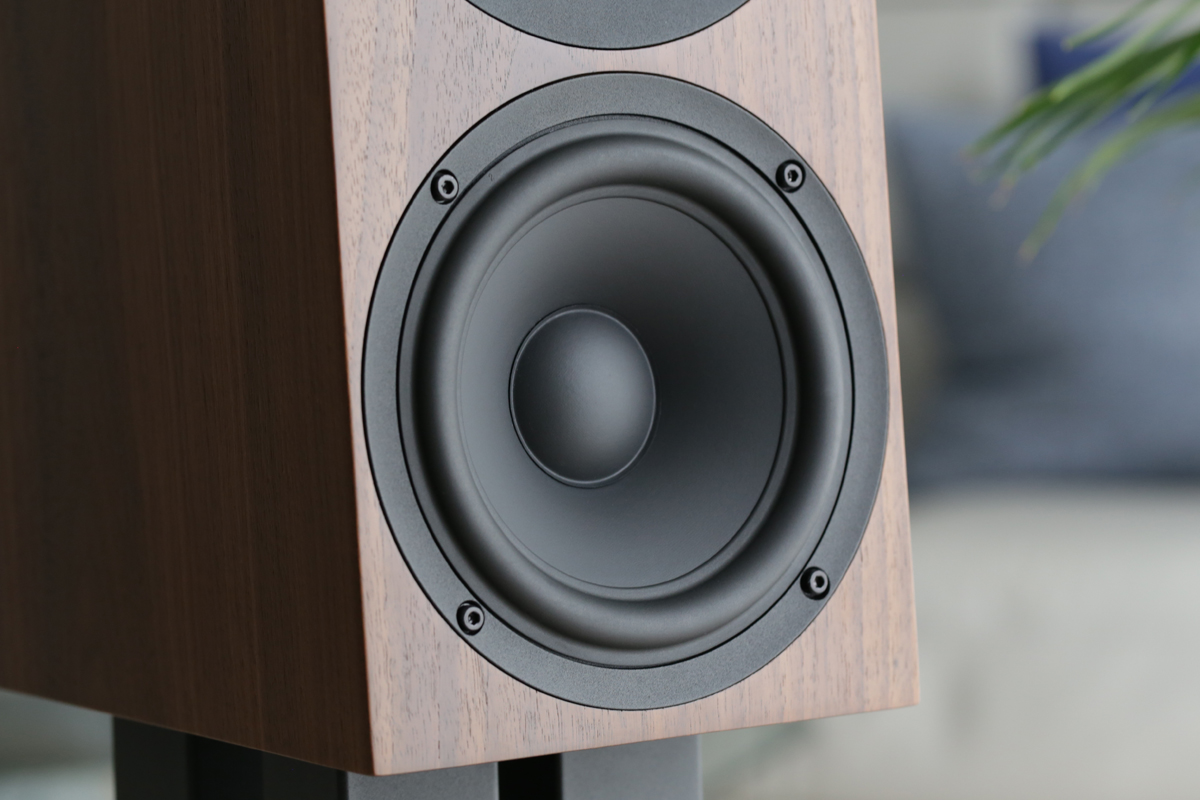
To assess these Danish speakers’ facility with orchestral music, I cued up a gigantic work by Denmark’s most famous composer: Carl Nielsen’s Symphony No.4, “Inextinguishable,” with another Dane, Thomas Dausgaard, conducting the Seattle Symphony Orchestra (24/96 FLAC, Seattle Symphony/Qobuz), in a live performance from Seattle’s Benaroya Hall. Through the A500s, orchestral textures were commendably transparent, which made it easy to follow the dense counterpoint in the opening section of the final movement. While the soundstage wasn’t especially deep, it was very wide, with solo and grouped instruments in clearly defined positions. At several points in the last movement, two timpanists engage in battle from opposite sides of the orchestra as brass blare and strings saw all around them. The A500s tracked these massive passages with no hint of strain or congestion -- those kettledrums exploded into my room. I wouldn’t have believed that a pair of small minimonitors could produce such a big sound.
A tender passage in the middle of the last movement, with woodwinds and strings in dialog over a quiet timpani roll, was exquisite. Here, too, the A500’s superb dynamics made it easy to appreciate expressive touches -- an extra bit of force on violin downbows, an extra bit of breath in an oboe phrase. The A500’s bass capabilities were also apparent here -- the double basses had a gorgeous breathy quality.
Thanks to their ultrawide soundstaging, the A500s were very effective with film soundtracks. For one weekend movie night, my wife and I rented David Fincher’s Fight Club from the iTunes store and streamed it to the Apple TV 4K media adapter connected to our Samsung 55” Frame TV, mounted on the wall above our faux fireplace, the speakers equidistant from the screen to either side. The Stereo Hub’s HDMI input was connected to the Frame TV’s HDMI-ARC port, so that I could control the level of the A500s with the TV’s remote.
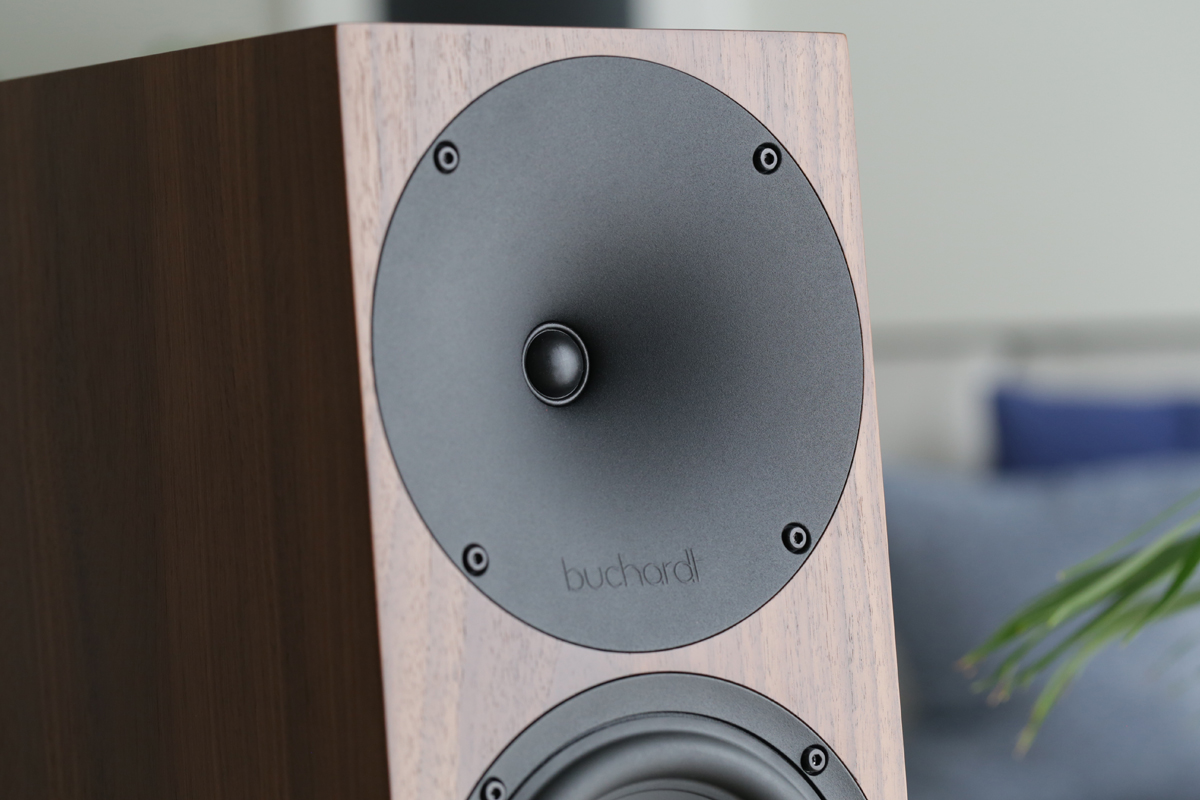
Even though the TV was downmixing Fight Club’s 5.1-channel Dolby Digital soundtrack to two-channel PCM, the sound was far more expansive than I’d usually expect from a pair of stand-mounted speakers. The sounds of city scenes around Los Angeles and fight scenes in the basement of Lou’s Tavern extended far past the speakers’ outer side panels and far out into the room, while dialog remained anchored to the screen.
Mastertunings
As I wrapped up this review, Buchardt Audio had made 11 Mastertunings available for download, including the stock 2.5-way tuning used for the listening sessions above. There was no way I could try the ten other Mastertunings in the time I had for this review, so Mads Buchardt suggested I check out two: an alternative 2.5-way Mastertuning with a more forward midrange, and a three-way Mastertuning in which midrange-woofer and tweeter hand off at 1800Hz.
Buchardt said that the alternative 2.5-way Mastertuning with enhanced midrange would bring voices more to the fore, and so it proved with Dylan’s “My Own Version of You.” His voice moved farther out into the room, and his snarling, contemptuous tone was more apparent. The guitars, too, came forward a bit. Everything in the mix was more differentiated -- I could better appreciate each musician’s contribution -- but the mix was also a little less integrated, with less of the spooky atmosphere that pervades this recording. This Mastertuning revealed more of the trees, less of the forest.
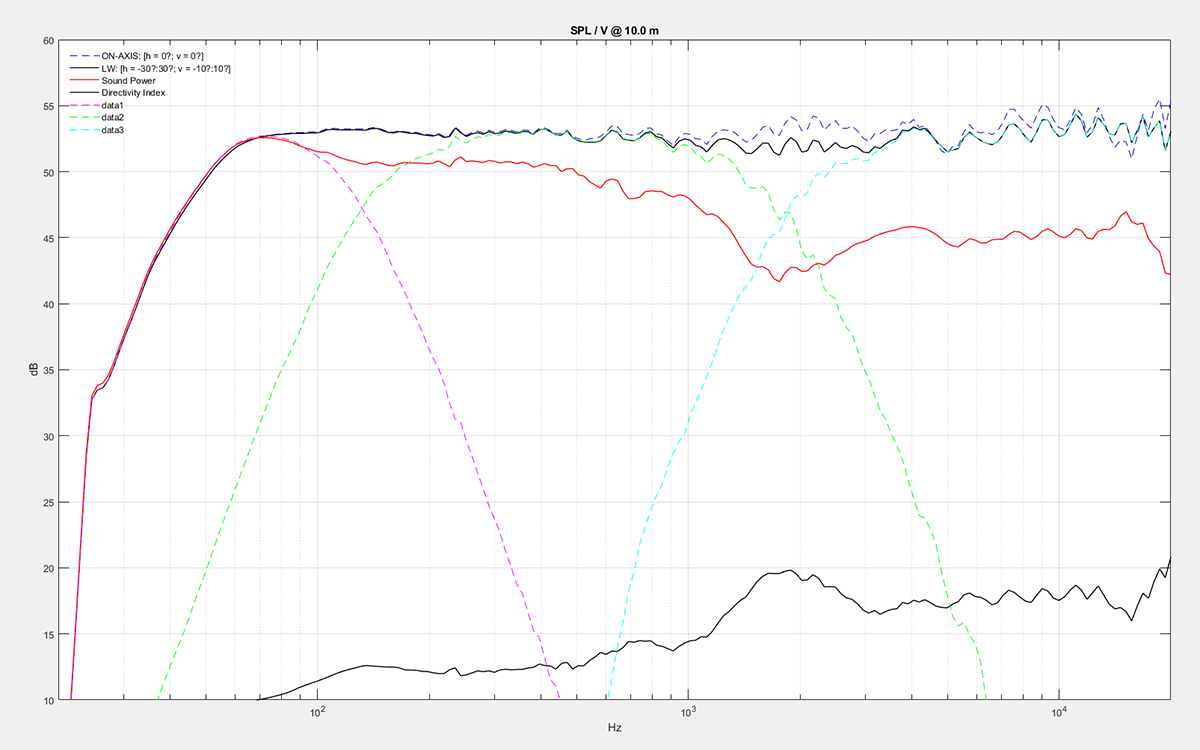
In the three-way Mastertuning, a high-pass filter is implemented before the front midrange-woofer so that it produces midrange frequencies only, the rear woofer then handling all of the bass. The crossover frequency is 150Hz. There are two three-way Mastertunings -- one with the standard 2.8kHz crossover frequency between the front woofer and tweeter, and another at 1.8kHz. According to Buchardt’s installation notes, both three-way Mastertunings trade off high SPL and bass extension for a more delicate midrange, and are intended for smaller rooms. The 1.8kHz version is suited for small rooms in which the listener sits close to the speakers. My listening setup certainly qualifies -- the sweet spot on my sofa is 7’ from each speaker.
In the aria from Villa-Lobos’s Bachianas Brasileiras No.5, Thibaut Garcia’s classical guitar had a little more tactility with the three-way Mastertuning -- I was more aware of the movements of his fingers on the strings. Similarly, I could hear a bit more of how Elsa Dreisig formed consonants. The sound definitely wasn’t spitty or sibilant, just a little better defined. This Mastertuning really suited this recording. While the sound was slightly bigger with the stock 2.5-way Mastertuning, it was also a little vaguer.
I briefly tried some of the other Mastertunings, including a 2.5-way version intended for nearfield listening. While the differences were subtle, they were definitely audible. Listening to two different Mastertunings was like becoming acquainted with a pair of identical twins: At first, it’s hard to tell them apart; but as you get to know them, you become aware of different mannerisms, habits of speech, facial expressions, life experiences, and viewpoints. After a short time, you easily recognize each as an individual with a distinct personality.
Comparisons
I compared the Buchardts with two analog active speakers: my Elac Navis ARF-51 floorstanders ($4559.98/pair), and Focal’s Solo6 Be studio monitors ($2998/pair), the latter next up in my review schedule.
The Elac is a three-way rear-ported design, with a coaxial driver comprising a 4” aluminum midrange driver with concentrically mounted 1” soft-dome tweeter, and three 5.25” aluminum-cone woofers. The bass section is powered by a 160W BASH amplifier, the midrange driver by a 100W BASH amp, and the tweeter by a 40W class-AB amp.
The two-way Solo6 Be is vented by a slot at the bottom of the front baffle. Its 6.5” woofer is powered by a 150W BASH amplifier, its inverted 1” beryllium-dome tweeter by a 100W class-AB amp.
So that I could use the same source for all three pairs of speakers, I connected an exaSound e32 Mk.II DAC ($2499) to their XLR inputs using a 2m-long pair of Argentum Acoustics Mythos balanced cables. Music came from Roon, streamed to an exaSound Sigma streamer ($750) via Wi-Fi. The Sigma was connected via USB to the e32 Mk.II with a 2m AudioQuest Cinnamon USB link. Before making any comparisons, I matched the speakers’ levels to within 0.25dB using pink noise and a handheld SPL meter. I reverted to the 2.5-way stock Mastertuning for the A500s.
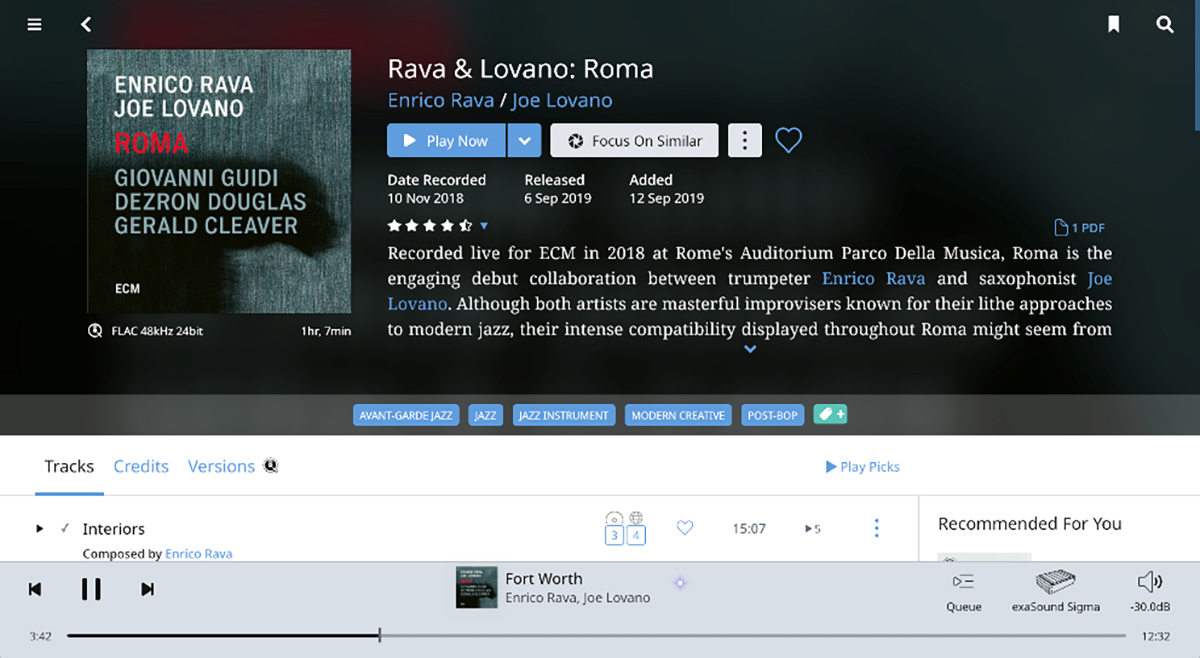
“Fort Worth” is a high-energy jazz number from Roma, a live album from Rome’s Auditorium Parco della Musica by American saxophonist Joe Lovano. Italian trumpeter Enrico Rava (who here plays flugelhorn throughout), and a rhythm section comprising pianist Giovanni Guidi, double bassist Dezron Douglas, and drummer Gerald Cleaver (24/48 FLAC, ECM/Qobuz).
With this track, the Elacs sounded a little denser than the Buchardts -- everything was a bit more mushed together. Douglas’s bass sounded fuller but woollier. Cleaver’s drum kit sounded a bit bigger and more powerful through the Elacs, but not as snappy or well defined. Transient attacks in Guidi’s piano solo were sharper through the Buchardts, more rounded through the Elacs. The Elacs’ soundstage seemed larger -- I was more aware that the music was being performed in a big auditorium -- but the Buchardts had more drive and energy.
The Focals threw a soundstage that was slightly deeper and higher than the Buchardts’, but the soundstage created by the A500s was more filled in -- there seemed to be more going in the spaces between the musicians. Through the Focals, I heard a bit more detail and expression in Lovano’s tenor sax -- and a little more squawk. On the other hand, Rava’s flugelhorn sounded a little more rich and burnished through the A500s. Instruments were separated from each other a bit better through the Focals -- when everyone plays together, I could hear more of Guidi’s piano. During Guidi’s solo, I was also a little more aware of his touch and phrasing, but his instrument had more weight through the Buchardts. While the Focals were slightly more detailed and resolving, the Buchardts were a little more dynamic and exciting -- Cleaver’s rim shots hit harder -- and fuller-sounding as well. I found the A500s more coherent -- more effective at presenting the music as an organic whole.
Conclusion
I’ve raised a couple of quibbles about Buchardt Audio’s A500 speakers and Stereo Hub WiSA transmitter: the Hub’s flaky room correction app, and the speakers’ cosmetics, which will suit casual but not elegant décors.
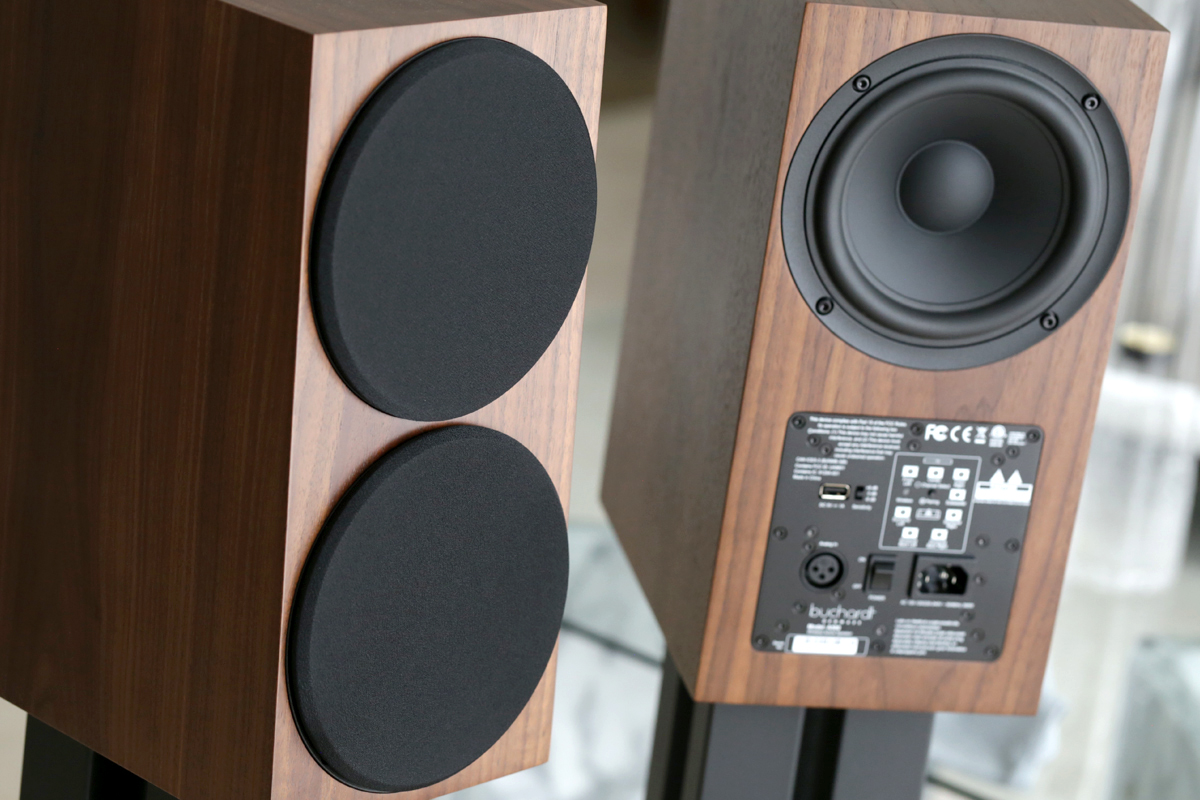
Beyond that, I have nothing but praise for this combination, which provides a low-footprint way to get killer sound into almost any living space. They’re proof positive that you don’t need a big stack of components to get exciting and dynamic sound, high-impact bass, commendably accurate vocal and instrumental timbres, and precise aural images on big soundstages.
And thanks to their direct-to-consumer business model, Buchardt Audio delivers all this for a very attractive price that includes all sales taxes, import costs, and shipping expenses. Considering that I’m talking about a pair of active minimonitors with 450Wpc RMS of built-in amplification and a module that lets you stream wirelessly, these things are giant-killers.
. . . Gordon Brockhouse
Associated Equipment
- Analog active speakers -- Elac Navis ARF-51, Focal Solo6 Be
- Sources and control devices -- exaSound Sigma streamer and e32 Mk.II DAC, Apple Mac Mini computer running Roon Core 1.7, LG G7 ThinQ smartphone, Apple iPhone SE (first generation), Apple iPad Mini 3, Samsung UN55LS003 55” Frame TV, Apple TV 4K
- Interconnects -- Argentum Acoustics Mythos balanced (XLR, 2m), AudioQuest Cinnamon digital (USB, 2m)
- Speaker stands -- Monoprice Monolith (28”H)
- Network -- Google Wifi three-node mesh network
Buchardt Audio A500 Active Speakers and Stereo Hub
Price (both): $4450 USD/pair (black or white speaker finish; add $100/pair for walnut finish). Includes shipping, insurance, and all taxes and duties, including local and state/provincial sales taxes.
Warranty (parts and labor): Ten years, speakers; two years, electronics.
Buchardt Audio ApS
Guldsmedgade 28 St.
8000 Aarhus C
Denmark
+45 26748680
E-mail:
Website: www.buchardtaudio.com



